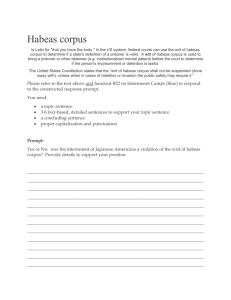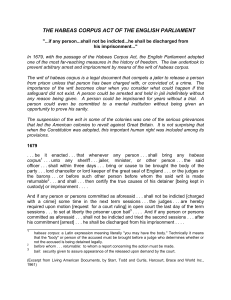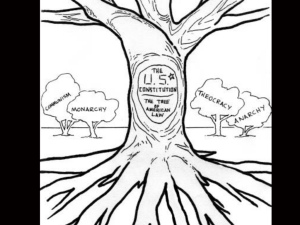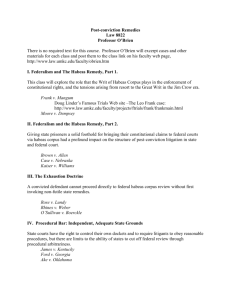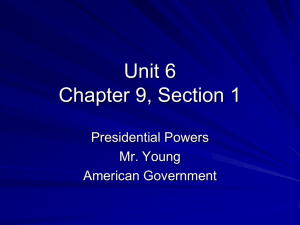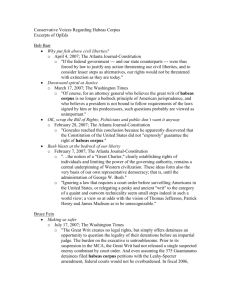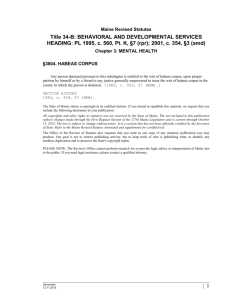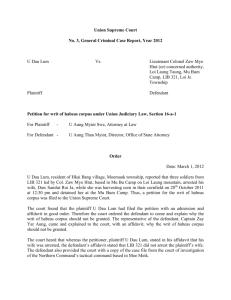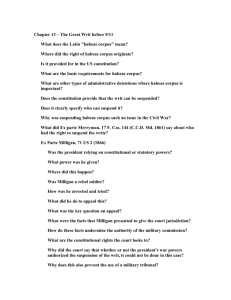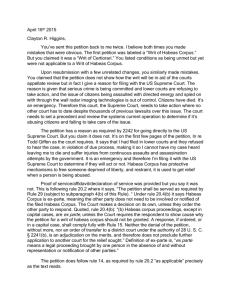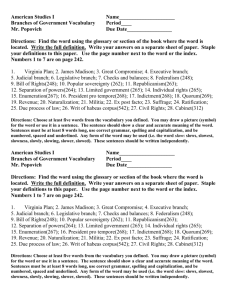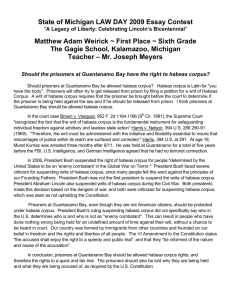BILL ANALYSIS
advertisement
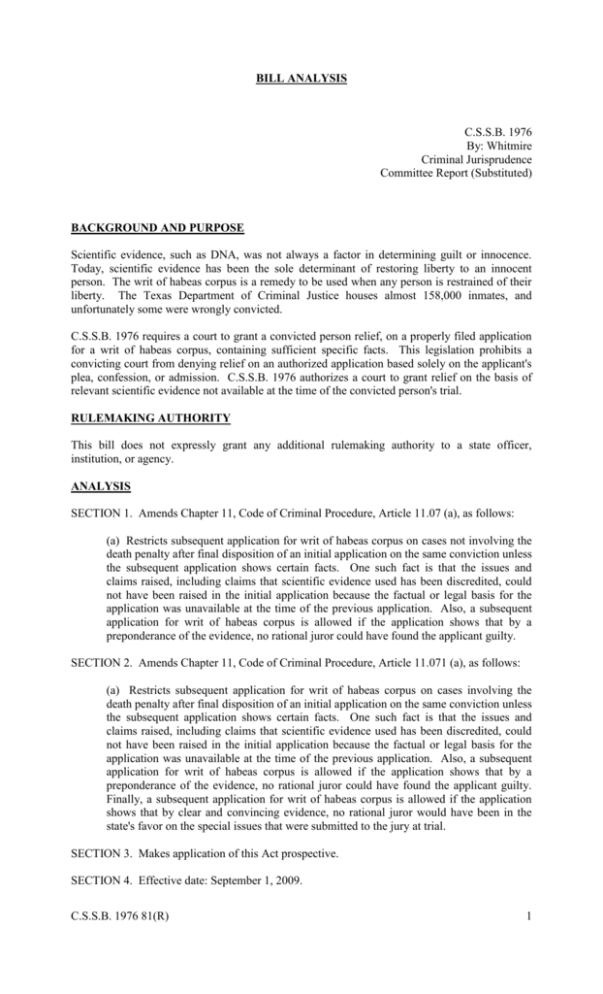
BILL ANALYSIS C.S.S.B. 1976 By: Whitmire Criminal Jurisprudence Committee Report (Substituted) BACKGROUND AND PURPOSE Scientific evidence, such as DNA, was not always a factor in determining guilt or innocence. Today, scientific evidence has been the sole determinant of restoring liberty to an innocent person. The writ of habeas corpus is a remedy to be used when any person is restrained of their liberty. The Texas Department of Criminal Justice houses almost 158,000 inmates, and unfortunately some were wrongly convicted. C.S.S.B. 1976 requires a court to grant a convicted person relief, on a properly filed application for a writ of habeas corpus, containing sufficient specific facts. This legislation prohibits a convicting court from denying relief on an authorized application based solely on the applicant's plea, confession, or admission. C.S.S.B. 1976 authorizes a court to grant relief on the basis of relevant scientific evidence not available at the time of the convicted person's trial. RULEMAKING AUTHORITY This bill does not expressly grant any additional rulemaking authority to a state officer, institution, or agency. ANALYSIS SECTION 1. Amends Chapter 11, Code of Criminal Procedure, Article 11.07 (a), as follows: (a) Restricts subsequent application for writ of habeas corpus on cases not involving the death penalty after final disposition of an initial application on the same conviction unless the subsequent application shows certain facts. One such fact is that the issues and claims raised, including claims that scientific evidence used has been discredited, could not have been raised in the initial application because the factual or legal basis for the application was unavailable at the time of the previous application. Also, a subsequent application for writ of habeas corpus is allowed if the application shows that by a preponderance of the evidence, no rational juror could have found the applicant guilty. SECTION 2. Amends Chapter 11, Code of Criminal Procedure, Article 11.071 (a), as follows: (a) Restricts subsequent application for writ of habeas corpus on cases involving the death penalty after final disposition of an initial application on the same conviction unless the subsequent application shows certain facts. One such fact is that the issues and claims raised, including claims that scientific evidence used has been discredited, could not have been raised in the initial application because the factual or legal basis for the application was unavailable at the time of the previous application. Also, a subsequent application for writ of habeas corpus is allowed if the application shows that by a preponderance of the evidence, no rational juror could have found the applicant guilty. Finally, a subsequent application for writ of habeas corpus is allowed if the application shows that by clear and convincing evidence, no rational juror would have been in the state's favor on the special issues that were submitted to the jury at trial. SECTION 3. Makes application of this Act prospective. SECTION 4. Effective date: September 1, 2009. C.S.S.B. 1976 81(R) 1 EFFECTIVE DATE September 1, 2009. COMPARISON OF ORIGINAL TO SUBSTITUTE The substitute reorganizes the original into a new Article 11.073 in Chapter 11 of the Code of Criminal Procedure as follows: SECTION 1. Art. 11.073 EVIDENCE: PROCEDURES RELATED TO CERTAIN SCIENTIFIC (a) Applies to scientific evidence that either was not previously available at trial or evidence that has since been discredited. (b) Allows the court to grant relief on applications for writ of habeas corpus if the application contains specific facts that relevant scientific evidence now exists that either did not exist at the time of trial or was not ascertainable via reasonable diligence, the evidence would be admissible under the Texas Rules of Evidence, and if the court finds that it is probable that the convicted person would not have been convicted had this evidence been available for trial. (c) Defines why a claim or issue could not have been presented in a previous application for writ of habeas corpus. (d) Sets guidelines for the court to consider on whether the scientific evidence was ascertainable at the time of the original trial on the merits. The court shall consider whether the science or method has changed since the trial date(s) as applied to an original application, or the date on which the original application was filed as applied to subsequent applications. SECTION 2. No change from original. SECTION 3. No change from original. C.S.S.B. 1976 81(R) 2
